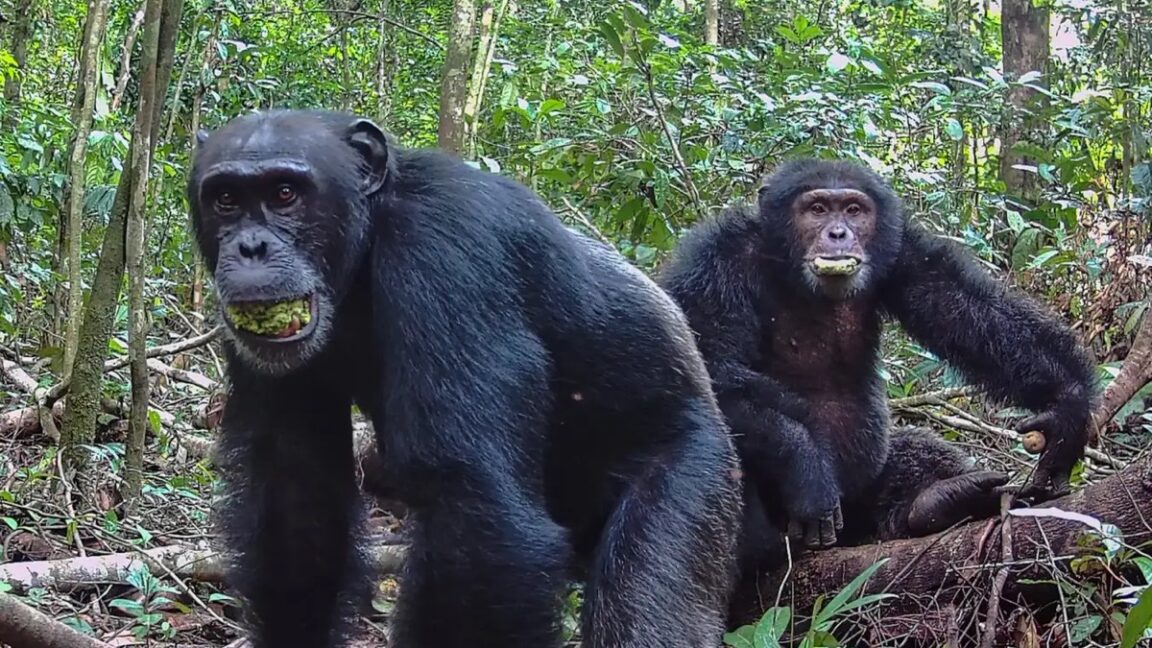
In 2014, University of California, Berkeley biologist Robert Dudley wrote a book called The Drunken Monkey: Why We Drink and Abuse Alcohol. His controversial “drunken monkey hypothesis” proposed that the human attraction to alcohol goes back about 18 million years, to the origin of the great apes, and that social communication and sharing food evolved to better identify the presence of fruit from a distance. At the time, skeptical scientists insisted that this was unlikely because chimpanzees and other primates just don’t eat fermented fruit or nectar.
But reports of primates doing just that have grown over the ensuing two decades. Dudley co-authored a new paper published in the journal Science Advances reporting the first measurements of the ethanol content of fruits favored by chimps in Ivory Coast and Uganda, finding that the chimps are consuming 14 grams of alcohol every day, the equivalent of a standard alcoholic drink in the US. After adjusting for the chimps’ lower body mass, the authors concluded the chimps are consuming nearly two drinks per day.
Earlier this year, we reported that researchers had caught wild chimpanzees on camera engaging in what appears to be sharing fermented African breadfruit with measurable alcoholic content. That observational data was the first evidence of the sharing of alcoholic foods among nonhuman great apes in the wild. They recorded 10 instances of selective fruit sharing among 17 chimps, with the animals exhibiting a marked preference for riper fruit. Between April and July 2022, the authors measured the alcohol content of the fruit with a handy portable breathalyzer and found almost all of the fallen fruit (90 percent) contained some ethanol, with the ripest containing the highest levels—the equivalent of 0.61 percent ABV (alcohol by volume).
That’s comparatively low to alcoholic drinks typically consumed by humans, but then again, fruit accounts for as much as 60 to 80 percent of the chimps’ diet, so the amount of ethanol consumed could add up quickly. It’s highly unlikely the chimps would get drunk, however. It wouldn’t confer any evolutionary advantage, and, according to the authors, there is evidence in the common ancestor of African apes of a molecular mechanism that enhances the ability to metabolize alcohol.
Nearly two drinks a day
This latest study involved chimp populations at the Ngogo Chimpanzee Project (Uganda) and a second site at Tai (Ivory Coast), where scientists have estimated the animals consume between 5 to 10 percent of their body weight (about 40 kilos) in fruit each day—around 45 kilograms. The authors collected fallen fruit pulp samples from both sites, packed them in airtight containers, and froze them back at base camp to keep the fruit from ripening further.
Then they quantified the ethanol concentrations using a breathalyzer, a portable gas chromatograph, and chemical testing. The Uganda fruit contained 0.32 percent ethanol, while the Ivory Coast fruit contained 0.31 percent ethanol, which might not sound like much until you consider just how much fruit they eat. And the most frequently consumed fruit at both sites had the highest ethanol content.
If anything, this is a conservative estimate, per Dudley. “If the chimps are randomly sampling ripe fruit, then that’s going to be their average consumption rate, independent of any preference for ethanol,” he said. “But if they are preferring riper and/or more sugar-rich fruits, then this is a conservative lower limit for the likely rate of ethanol ingestion.” That’s in keeping with a 2016 report that captive aye-ayes and slow lorises prefer nectar with the highest alcohol content.
“Our findings imply that our ancestors were similarly chronically exposed to dietary alcohol,” co-author Aleksey Maro, a graduate student at UC Berkeley, told New Scientist. “The drunken monkey hypothesis suggests that this exposure caused our species to evolve an association between alcohol consumption and the reward of finding fruit sugars, and explains human attraction to alcohol today.” One caveat is that apes ingest ethanol accidentally, while humans drink it deliberately.
“What we’re realizing from this work is that our relationship with alcohol goes deep back into evolutionary time, probably about 30 million years,” University of St. Andrews primatologist Catherine Hobaiter, who was not involved with the study, told BBC News. “Maybe for chimpanzees, this is a great way to create social bonds, to hang out together on the forest floor, eating those fallen fruits.”
The next step is to sample the chimps’ urine to see if it contains any alcohol metabolites, as was found in a 2022 study on spider monkeys. This will further refine estimates for how much ethanol-laden fruit the chimps eat every day. Maro spent this summer in Ngogo, sleeping in trees—protected from the constant streams by an umbrella—to collect urine samples.
Science Advances, 2025. DOI: 10.1126/sciadv.adw1665 (About DOIs).



